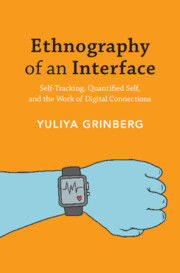Refine search
Actions for selected content:
48569 results in Computer Science
Introduction to the Special Issue on Logic Rules and Reasoning: Selected Papers From the 6th International Joint Conference on Rules and Reasoning (RuleML+RR 2022)
-
- Journal:
- Theory and Practice of Logic Programming / Volume 25 / Issue 2 / March 2025
- Published online by Cambridge University Press:
- 19 May 2025, pp. 132-133
-
- Article
-
- You have access
- Open access
- HTML
- Export citation

Ethnography of an Interface
- Self-Tracking, Quantified Self, and the Work of Digital Connections
-
- Published online:
- 18 May 2025
- Print publication:
- 05 June 2025

Probabilistic Data-Driven Modeling
-
- Published online:
- 17 May 2025
- Print publication:
- 01 May 2025

Scalable Monte Carlo for Bayesian Learning
-
- Published online:
- 16 May 2025
- Print publication:
- 05 June 2025
Sensory Experience of Sound Installation Art and Documentation: Comparison across fields of expertise
-
- Journal:
- Organised Sound , First View
- Published online by Cambridge University Press:
- 16 May 2025, pp. 1-9
-
- Article
-
- You have access
- Open access
- HTML
- Export citation
Short proof of the hypergraph container theorem
- Part of
-
- Journal:
- Combinatorics, Probability and Computing / Volume 34 / Issue 5 / September 2025
- Published online by Cambridge University Press:
- 16 May 2025, pp. 621-624
-
- Article
- Export citation
Open Ambisonics Toolkit: A low-cost hardware–software–theory approach to spatial audio
-
- Journal:
- Organised Sound , First View
- Published online by Cambridge University Press:
- 15 May 2025, pp. 1-11
-
- Article
-
- You have access
- Open access
- HTML
- Export citation
Nonparametric two-sample test for networks using joint graphon estimation
-
- Journal:
- Network Science / Volume 13 / 2025
- Published online by Cambridge University Press:
- 15 May 2025, e6
-
- Article
-
- You have access
- Open access
- HTML
- Export citation
Covariate-adjusted functional data analysis for structural health monitoring
- Part of
-
- Journal:
- Data-Centric Engineering / Volume 6 / 2025
- Published online by Cambridge University Press:
- 15 May 2025, e27
-
- Article
-
- You have access
- Open access
- HTML
- Export citation



